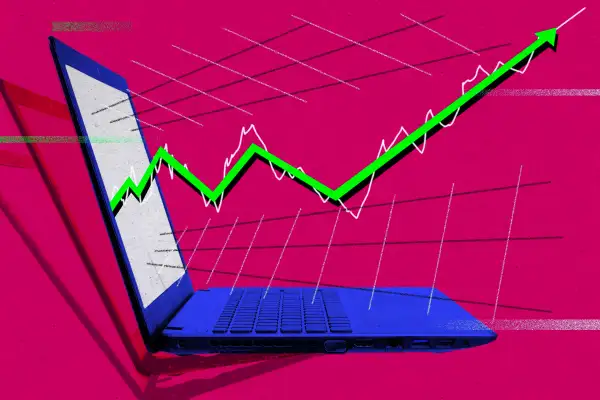Can Tech Stocks Keep Driving the Market Rally?
Money is not a client of any investment adviser featured on this page. The information provided on this page is for educational purposes only and is not intended as investment advice. Money does not offer advisory services.

The stock market is on a roll this year. The S&P 500 index officially entered a bull market last week, and the gains are showing no signs of slowing after encouraging inflation data on Tuesday.
Much of this year's growth, however, is attributable to a very small number of stocks — and that has some experts worried that the gains might not be sustainable.
As of last week, nearly 18% of the S&P 500’s 11% gains for the year at the time were driven by a single company: Apple, which hit a fresh high on Monday. In fact, all five of the index’s top contributors last week were mega cap tech stocks, according to data from S&P Dow Jones Indices. Closely behind Apple was Microsoft, which was responsible for 16.5% of the S&P 500 gains. Up next were Nvidia (14.8%), Amazon (8.8%) and Meta (8.4%).
Since then, the rally has continued, with the S&P 500 up around 14% as of Wednesday.
Without the 20 top contributors in the index, the other 480 companies in the S&P 500 would have collectively been in the red for the year, according to the firm's data from last week.
That imbalance could be cause for concern, says Jason Hsu, chief economist at East West Bancorp.
A few stocks driving a rally is "generally associated with a bubble forming around a particular theme or a particular industry," Hsu says. In this case, that ultra-hot industry is artificial intelligence (AI).
Will the stock market's tech rally last?
In their early stages, bull runs — periods of stock prices increasing — are not usually led by mega cap stocks like Amazon and Alphabet, says Liz Young, head of investment strategy at SoFi. Instead, they’re led by smaller, cyclical stocks that are much more sensitive to changes in the economy.
That’s not the case this time around as a surge in interest around AI has pushed tech stocks higher, though the rally has broadened somewhat over the last week.
While no one can predict the future of the stock market, Young lays out two possible scenarios. On the one hand, she says, a very small number of stocks participating in the rally might mean the rest of the market doesn't have much momentum. If that's the case, "we’re bound to give back some of the rally that we’ve seen in these large cap names," Young says.
The other scenario — and a more optimistic view — is that “large cap stocks know something that the rest of the market doesn’t,” she adds. That would likely mean that over time, the stocks that aren’t participating in the rally would catch up to the large tech stocks. Right now, it’s not clear which of those two scenarios is actually happening.
For tech stocks (and the broader market) to have a better chance of holding onto these recent gains, Angelo Kourkafas, an investment strategist at Edward Jones, says more stocks have to start rising, too.
“Broader participation is necessary,” Kourkafas says.
What should investors know about the tech rally?
While the stock market's strong performance could start to slow — thanks in part to some prolonged effects from the pandemic, like waning savings and government stimulus — Kourkafas says that it’s also possible that we're in the early days of a long bull rally.
He points to cooling inflation as one catalyst that may send stocks higher. The Federal Reserve’s decision regarding interest rates on Wednesday afternoon could help or hurt stocks too, depending on if the central bank raises interest rates or keeps them steady. The central bank has been raising interest rates for more than a year in an effort to bring down high consumer prices — a move that also weighed on stocks for most of 2022.
All that to say: Expect some choppiness in the months to come.
“It's not necessarily a bad time to stay in the market,” Kourkafas says, “but at the same time, there are some headwinds."
In the immediate term, he encourages investors to stick to their strategic long-term portfolio allocation rather than trying to time the market’s pullbacks.
“History shows that some of the best days happen during the early phase of a new up cycle,” Kourkafas says.
More from Money:
The S&P 500 Is in a Bull Market. Will It Last?
Why the Debt Ceiling Deal Could Actually Hurt Stocks
The Stock Market's 'Strong Start' to 2023 Could Signal Good News for the Rest of the Year

